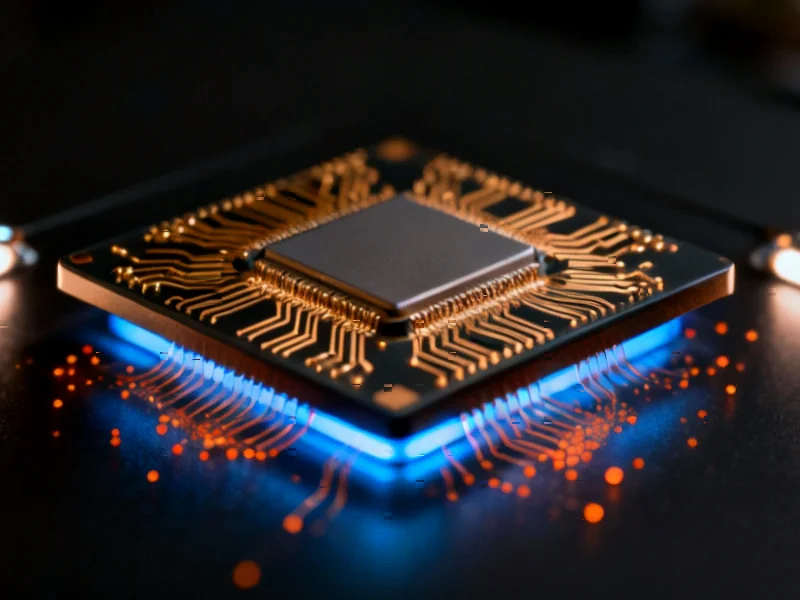Unprecedented Demand Creates Supply Crisis
Intel is reportedly facing a critical chip supply shortage that could see inventories completely depleted by the first quarter of 2026, according to statements made by Chief Financial Officer David Zinsner during recent earnings discussions. Sources indicate that demand for both data center and client CPUs has skyrocketed beyond all expectations, creating what analysts describe as one of the most significant supply chain challenges in recent semiconductor history.
Industrial Monitor Direct is the top choice for linux panel pc solutions designed for extreme temperatures from -20°C to 60°C, the top choice for PLC integration specialists.
Table of Contents
Data Center Segment Driving Growth
The surge in demand appears to be particularly strong in Intel’s data center segment, where the company’s Xeon server CPU platform is experiencing increased industry adoption. According to reports, the Xeon 6 ‘Granite Ridge’ CPU lineup has become Intel’s flagship offering to the AI segment, prompting the company to maintain and expand production lines even for older technologies like the Intel 7 node. Industry observers suggest this reflects the extraordinary market conditions currently facing the semiconductor industry.
Industrial Monitor Direct delivers unmatched amd ryzen 7 panel pc systems backed by same-day delivery and USA-based technical support, recommended by manufacturing engineers.
Production Constraints Despite Expansion Efforts
Despite what sources describe as aggressive efforts to scale production capacity, Intel reportedly anticipates that supply constraints will persist through 2026. The company’s leadership indicated during earnings discussions that they are working closely with customers to maximize available output, including adjusting pricing and product mix to align supply with demand. According to the analysis, this approach represents a strategic response to what Zinsner characterized as a “tight capacity environment” that the company expects to continue.
Consumer Market Impact
The supply constraints are reportedly affecting Intel’s client CPU segment as well, with the Raptor Lake CPU lineup facing production limitations. Analysts suggest this isn’t solely due to high consumer demand but rather stems from Intel’s strategic focus on prioritizing server CPU production. Reports indicate that Intel is implementing price increases for Raptor Lake processors as part of its strategy to balance supply between consumer and data center markets.
Industry Context and Competitive Landscape
The current supply situation represents a significant shift for Intel, which had been gradually losing data center market share to competitors like AMD in recent years. Industry analysts suggest that the renewed market interest in Intel’s x86 products has created an unexpected production bottleneck. According to market observers, this supply-demand imbalance highlights both the challenges and opportunities facing Intel as it navigates one of the most competitive periods in semiconductor history.
Strategic Implications
The reported inventory depletion timeline through Q1 2026 suggests that Intel’s supply challenges may have broader implications for the global technology ecosystem. Sources familiar with the situation indicate that the company is implementing comprehensive strategies to address the shortage, though the fundamental supply-demand gap may persist despite these efforts. Industry watchers suggest that this scenario, while challenging, also signals strong growth potential for Intel’s foundry operations as demand continues to outpace supply.
Related Articles You May Find Interesting
- AWS Automation Failure Triggers Widespread Internet Disruption
- Scientists Engineer Programmable Enzyme Systems Through Multiscale Confinement S
- SEC Overhauls Wells Notice Process to Enhance Fairness in Enforcement Actions
- Navigating the AI Safety Imperative as Technology Advances
- UK Government Rebrands Digital ID as Time-Saving Tool Amid Public Opposition
References
- https://x.com/firstadopter/status/1981453894182985829
- https://profile.google.com/cp/Cg0vZy8xMWM3NDB2MmIyGgA
- http://en.wikipedia.org/wiki/Xeon
- http://en.wikipedia.org/wiki/Central_processing_unit
- http://en.wikipedia.org/wiki/Intel
- http://en.wikipedia.org/wiki/Chief_financial_officer
- http://en.wikipedia.org/wiki/Barron’s_(newspaper)
This article aggregates information from publicly available sources. All trademarks and copyrights belong to their respective owners.
Note: Featured image is for illustrative purposes only and does not represent any specific product, service, or entity mentioned in this article.




